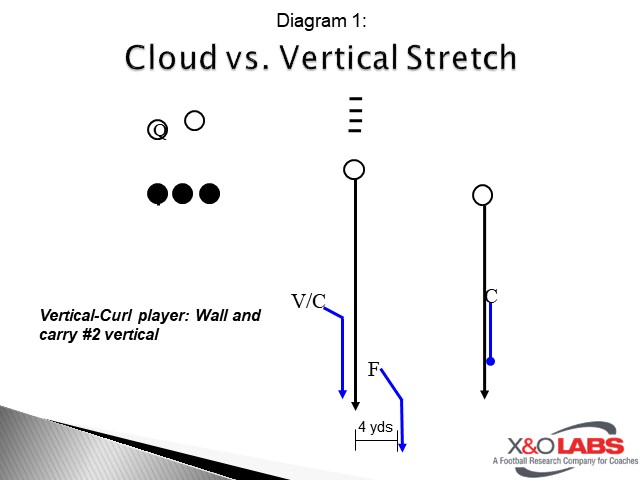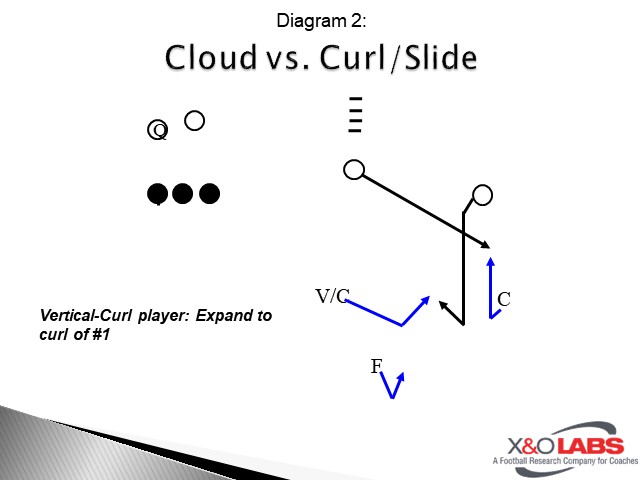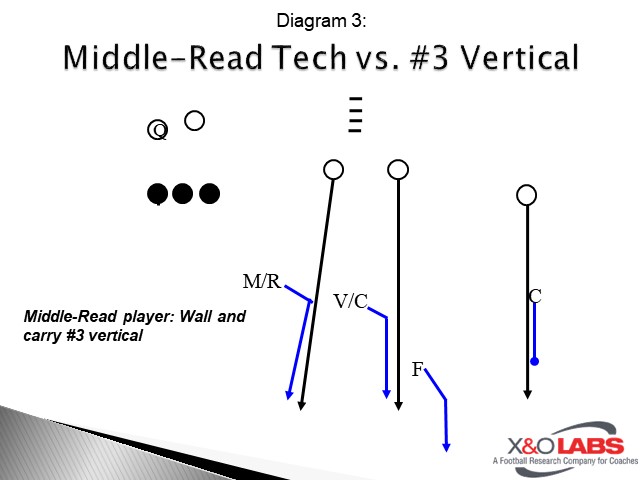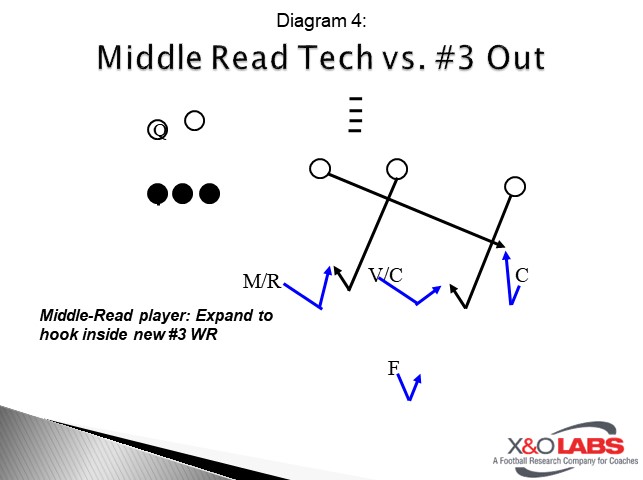By Mark Theophel
Defensive Coordinator
Hartwick College (NY)
Introduction:
During the pandemic of 2020, with no football season being played at Hartwick College, we decided to seize the opportunity to evaluate different ways of doing things. On defense, there were two particular topics we focused on that have recently risen in popularity: 3-high safety defense and 2-deep simulated pressures. The 3-high package was of particular interest because adding an extra safety who could adjust to formations would allow us to be more flexible with our base coverages, while also being able to run more coverage variations behind our pressure package. While studying this topic, we found that there are a number of different advantages created by running our pressure patterns with 3-high spacing.
- Using a 3-high shell makes it easier to disguise coverage, particularly vs. Trips formations.
- Using 3-High safeties makes it easier to adjust to formations and create better match ups.
- Replacing a LB with a safety to defend the seam in 2-deep coverage makes simulated pressures more effective.
- Having an extra safety allows for more zone coverage variations behind safety blitzes.
In 2021, we were in a 3-high safety defense 34% of the time, which increased to 49% of the time during the 2022 season. Of our 15 interceptions in 2022, 8 of them occurred in our 3-high safety package, and 7 of those 8 occurred running some form of deep half coverage. In particular, 2-deep coverage and simulated pressures became much more versatile with 3 safeties on the field. Running 2-Deep coverage on passing downs has been an effective way for us to firm up the flat and rely less on soft corner coverages like quarters and 3-deep. We also found that our Corners really enjoy getting a break and being more aggressive.
Deep Half Coverage:
Deep Half Coverage for us is a zone concept that can be played on both sides of the defense as a true 2-deep zone, or on one side of the defense as a combo coverage, such as quarter-quarter-half. Normally, our safety will defend the Deep ½ of the field, with our Corner being responsible for the flat. We clarify this with a run support call of “Cloud,” signifying that the Corner is the force defender on the play. The Corner’s primary zone of responsibility is the flat, but he is also charged with funneling the #1 WR inside to the safety. This will make it easier for the deep ½ safety to cover multiple vertical threats in his zone, while making the coverage less vulnerable in the “hole” along the sidelines.
Corner flat technique (“Cloud”):
- Funnel #1 inside to safety, eyes inside on #2
- Get chest to outside shoulder pad of #1
- Punch with outside arm, force inside release
- Sink and defend the hole with body positioning
- Defend the 1st inside WR to the flat, deep-to-short
- Read QB for throw
- Drive downhill on any throws to flat
- Get chest to outside shoulder pad of #1
Safety Deep ½ technique (“Cloud”):
- Pedal in zone and read QB
- Top all vertical routes of #2
- If #2 and #1 are both vertical, midpoint the zone
- Midpoint of the zone is 4 yards outside the hash
- If #2 is horizontal, see release of #1
- If #1 is outside, get off hash and play over the top
- If #1 is inside, stay in window and defend the post
- Never let #1 beat you inside
- Top all vertical routes of #2
It is important to note that unlike single-high coverages like Cover 3 or Cover 1, the middle of the field is open in 2-deep zones, so that needs to be accounted for in our teaching. When we first install deep half coverage, we will always have the same components: a deep half defender, a flat defender, and a curl defender who is also responsible for #2 on any deep inside vertical. Our term for this coverage responsibility is Vertical-Curl.
Vertical-Curl technique:
- Read #2 to #1, inside-out
- Wall and carry any inside vertical of #2 WR
- Emphasis on post or “seam” route
- If #2 is out, expand to the curl inside the #1 WR
- If #1 clears out, look inside for work
- If #2 is under/across, read the QB and scan the field for threats
- QB inside = Look for re-cross with #3
- QB outside = Look for slant/curl/dig of #1
- Wall and carry any inside vertical of #2 WR
Those first two coaching points are the most important things that Vertical-Curl defenders must understand. If #2 is vertical, we must run with him up the seam and protect the goalpost. If #2 releases to the outside, we know the corner or safety will be there in the flat, so we should expect an inside-breaking route by #1 and find the curl window. In any instance where #2 is out and #1 clears out (ie. Does not threaten inside), we should look inside for work. This applies to vertical routes that break outside as well, like a flag/corner route by #2.


In any 2-High coverage, including quarters, we will always have a defender responsible for the hook inside the #3 WR as well. Unless there is a Trips adjustment built into the scheme, this defender will also be responsible for #3 vertical. In 2-Deep coverage, we must account for #3 vertical for the same reason that we must account for #2 on inside verticals, because the middle of the field is open. Our hook defender is termed the Middle-Read defender.
Middle-Read technique:
- Read #3 to #2 to #1, inside-out
- Wall and carry any vertical route by #3
- Drop to near hip of #3, react to his release
- If #3 is out, expand and read #2 to #1
- Defend the hook inside the new #3 WR after all exchanges
- If #3 is under/across, find new #3
- Look for re-cross, stay inside new #3
- Wall and carry any vertical route by #3










